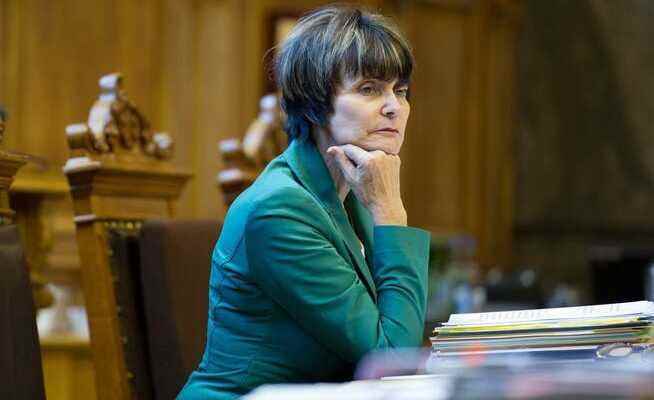There are now so many concepts of neutrality circulating in the public debate that one can get dizzy. Attempt to unravel adjectival neutralities.
As Foreign Minister, former Federal Councilor Micheline Calmy-Rey revived the concept of “active” neutrality.
“Neutrality changes depending on the development of events,” said Foreign Minister Marcel Pilet-Golaz during the Second World War. An expression of this are the adjective-laced concepts of neutrality that are currently circulating: “integral”, “differential”, “active”, “traditional”, “cooperative” forms of neutrality are wildly mixed up. The list of such adjectival neutralities is even longer, showing that neutrality is not a fixed concept.
Three models
Although there has been internationally agreed neutrality law since 1907, it is very rudimentary and only sets out a few basic principles. Around this, the policy of neutrality developed, which every neutral state pursues on its own responsibility in order to give credibility to its neutrality. This is even more open than the law of neutrality, but in principle three models can be described that are relevant to today’s Swiss discussion.
“Integral neutrality” shaped Swiss foreign and security policy during the Second World War and the Cold War. Since the League of Nations, the forerunner organization of the UN, proved incapable of creating a peace order, Switzerland distanced itself from the League of Nations in 1938 under Federal Councilor Giuseppe Motta with the catchphrase “return to integral neutrality”, but without withdrawing.
It received a formal concession from the League of Nations that it would no longer be bound by League of Nations sanctions. Today, this second return to “integral neutrality” would probably mean that Switzerland would distance itself from the UN, but without withdrawing. But it would certainly say goodbye to military peacekeeping missions, organize its military security “autonomously” and certainly not accept any sanctions from the EU. Today the SVP in particular operates with this older concept of neutrality.
The term “differential neutrality” was coined in 1920 when Switzerland joined the League of Nations. It was granted that it did not have to accept any military sanctions, but economic ones. Since Switzerland joined the UN twenty years ago, Switzerland has been pursuing a kind of “differential neutrality”, so it is the status quo. In contrast to 1920, Switzerland was not formally granted neutral status when it joined the UN. However, Switzerland has unilaterally declared that it intends to maintain its neutrality.
Now the UN charter restricts neutrality and obliges Switzerland to accept sanctions imposed by the UN. But in addition, Switzerland provides in its own sanctions law of 2002 to also follow sanctions that the Conference on Security and Co-operation in Europe (CSCE) and the most important trading partners have decreed – as has now happened with the EU sanctions.
Federal President Ignazio Cassis recently called the latest, still somewhat diffuse concept “cooperative neutrality”. As already envisaged in the concept of neutrality from 1993, it is based on the understanding that Switzerland can no longer autonomously defend its independence in a networked world; this is only possible in cooperation with other states that share the same values: democracy, rule-based international peace and human rights.
According to this model, our country remains outside of military alliances, i.e. it is non-aligned, but could work more closely with its neighbors and NATO, as the FDP, for example, is currently demanding. This could happen in areas such as interoperability in air defense, missile defense and cyber warfare, but also through joint maneuvers in training. Sweden and Finland have shown how such a model works in recent years.
Foreign policy options
Then there is the term “active neutrality”, which is not a concept and does not come from Micheline Calmy-Rey. It states that, regardless of the model of neutrality chosen, Switzerland does not watch world-historical events as a passive spectator, but wants to work in particular through humanitarian and good offices. Since the First World War, Swiss foreign politicians, above all Pilet-Golaz, have described neutrality as “active”.
All three “neutralities” are models or options for how future neutrality could be designed, even if a return to integral neutrality would be a step into the past. The fourth option is, of course, joining NATO, as the Finns and Swedes have now decided. Only a few people in Switzerland are calling for NATO membership. In view of the fact that neutrality, which is mythically inflated, is firmly anchored, it would also be a hopeless undertaking. The Russians would have to be at Lake Constance before the Swiss decided to take such a drastic step.
Marco Jorio was the editor-in-chief of the Historisches Lexikon der Schweiz and is the author of a forthcoming history of neutrality.
